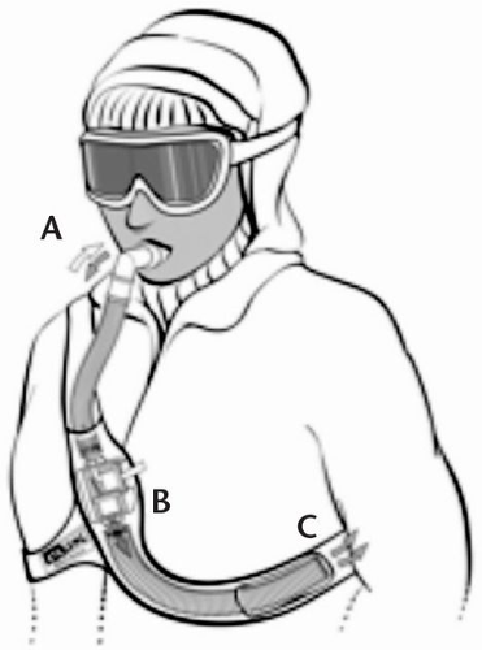Travel Reference
In-Depth Information
Figure 30-1. AvaLung. The device is worn over all other clothing. The subject breathes in and out
through the mouthpiece (A). Inhaled air enters from the snowpack through the one-way inspiratory
valve on the side of the housing (B) inside the mesh-protected harness on the chest. Expired air leaves
the lungs through the mouthpiece, travels down the respiratory tubing to an expiratory one-way valve
located at the bottom of the housing, and exits via respiratory tubing inside the harness around to the
back (C).
Breathing with the AvaLung® while buried in dense snow was compared to breathing
without the device but with a 500 ml air pocket in the snow. Mean burial times before the
development of hypoxia and hypercapnia were fifty-eight minutes with the device and ten
minutes with a 500 ml air pocket in the snow. This device has resulted in survival from ac-
tual avalanche burials by prolonging the time to asphyxiation, and allowing rescuers time
toreachtheircompanions.However,itsuseandacceptancehavenotbeenwidespreadeven

Search WWH ::

Custom Search